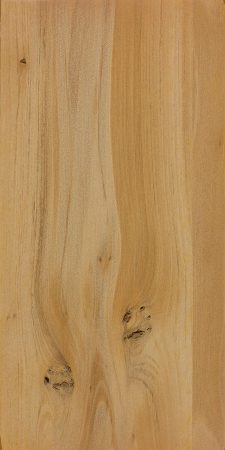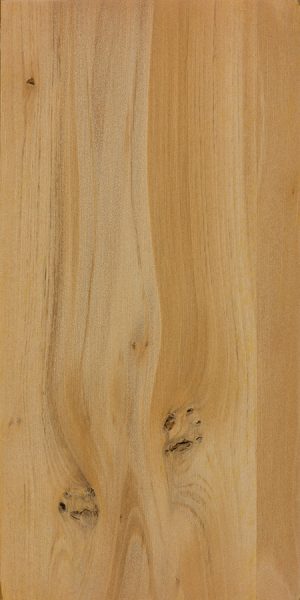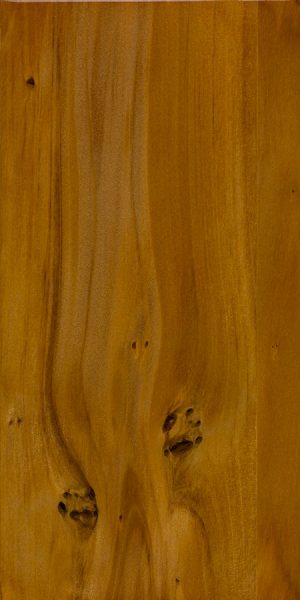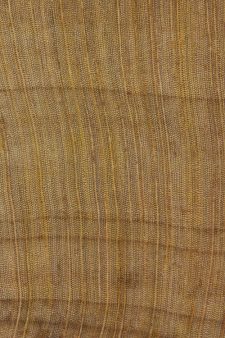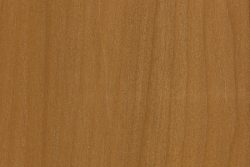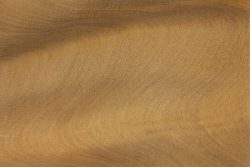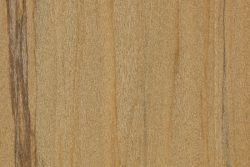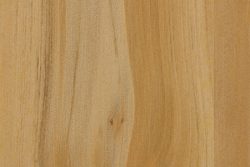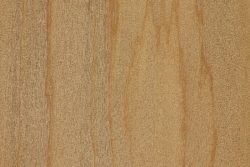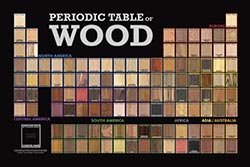Common Name(s): Fijian kauri, Pacific kauri
Scientific Name: Agathis macrophylla (syn. A. vitiensis)
Distribution: Native to Fiji, Vanuatu, and Santa Cruz Islands; also grown on plantations throughout Pacific Islands
Tree Size: 100-130 ft (30-40 m) tall,
3-7 ft (1-2 m) trunk diameter
Average Dried Weight: 34.3 lbs/ft3 (550 kg/m3)
Specific Gravity (Basic, 12% MC): .45, .55
Janka Hardness: 840 lbf (3,740 N)
Modulus of Rupture: 8,700 lbf/in2 (60.0 MPa)*
Elastic Modulus: 1,421,000 lbf/in2 (9.80 GPa)*
Crushing Strength: 5,580 lbf/in2 (38.5 MPa)*
*Strength properties are estimated based on AS/NZS 2878:2000 strength groups, see note in comments.
Shrinkage: Radial: 5.3%, Tangential: 7.9%,
Volumetric: 13.2%, T/R Ratio: 1.5
Color/Appearance: Pale yellowish white heartwood with sapwood not clearly demarcated from the heartwood. Due to the tree’s large size, kauri is nearly always clear and knot-less, with minimal wastage. Can easily develop blue stain if not dried properly.
Grain/Texture: Grain is usually straight, with a fine, even texture and a moderate natural luster.
Rot Resistance: Rated as non-durable to perishable regarding decay resistance.
Workability: Kauri’s moderate density, along with its straight and consistent grain give it good workability. Most machining and shaping operations can be performed with a minimum of trouble. Glues and finishes well.
Odor: No characteristic odor.
Allergies/Toxicity: Besides the standard health risks associated with any type of wood dust, no further health reactions have been associated with kauri. See the articles Wood Allergies and Toxicity and Wood Dust Safety for more information.
Pricing/Availability: Seldom exported to North America, Fijian kauri has a more limited commercial distribution within regions of the Pacific Islands and Asia where kauri lumber is in demand.
Sustainability: This wood species is not listed in the CITES Appendices, but is on the IUCN Red List. It is listed as endangered due to a very limited area of occupancy (less than 500 km2), as well as a decline and deforestation of its natural habitat. However, this species is also grown commercially on plantations.
Common Uses: Boatbuilding, furniture, cabinetry, kitchen utensils, vats, and turned objects.
Comments: Fijian kauri, perhaps more accurately called simply Pacific kauri, is a massive and fast-growing tree that’s been extensively logged in the past, and much of the wood coming from this species is now plantation-based.
*The strength values listed above should be treated as provisional approximations of minimum values. The values are taken from AS/NZS 2878:2000, and represent an average of the values of strength groups 6 and 7 (Bootle lists the wood as belonging to SD7, while Keating & Bolza place it in the slightly stronger SD6 group).
Images: Drag the slider up/down to toggle between raw and finished wood.
Identification: See the article on Softwood Anatomy for definitions of endgrain features.
Resin canals: absent
Tracheid diameter: medium
Earlywood to latewood transition: gradual
Grain contrast: low
Parenchyma: none
Lookalikes/Substitutes: None.
Notes: None.
Related Content:

